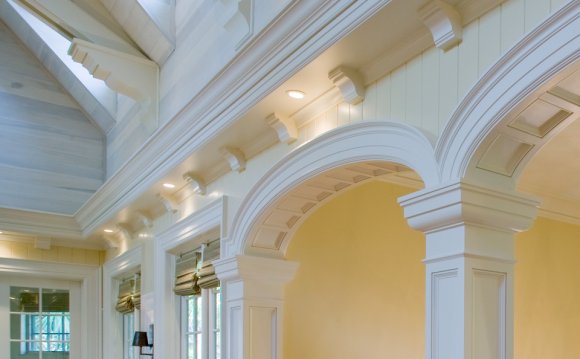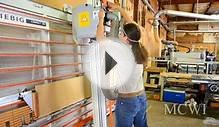
Creating Millwork: What Designers Ought To Know
By Jim McBryar
Architectural millwork is frequently the very first factor that somebody sees upon entering an area. Carefully used, architectural millwork could be a primary tool to speak design intent and convey the climate the designer needs to attain. Simultaneously, the possibility is available for millwork to become bland but costly disappointment. Even worse, if millwork isn't correctly designed and built it can result in costly errors which diminish function or perhaps damage the millwork or any other surfaces. Fortunately, a couple of simple tools and methods to millwork design and specs might help designers avoid probably the most common causes of problems and disappointment.
Quality Standards
First of all, any design professional who definitely are creating and indicating millwork should acquaint themselves with the standard standards established for architectural millwork through the Architectural Woodwork Institute (AWI). AWI is really a non-profit trade connection to over 4Thousand people from manufacturing, supply and style firms. The standard standards for architectural millwork established by AWI would be the industry standard for that design, construction, and installing of millwork from the greatest quality. The factors talk to every facet of millwork production including technical specifications for materials, joinery, finishing, and installing of an array of millwork items for example cabinets, doorways, home windows, trim etc.
These standards are released by AWI in Architectural Woodwork Quality Standards Highlighted. Because producing architectural millwork is extremely technical the AWI standards give a reliable method for design professionals to make sure that the millwork that's a part of their projects is going to be correctly built and installed without needing to become technical experts in wood product manufacturing. AWI has built three quality grades: economy, custom and premium. Economy grade isn't specified by commercial millwork a great number work carried out to AWI standards is either custom or premium grade. Premium grade standard is the greatest grade to be used in commercial programs where millwork has got the most deterioration.
By indicating millwork be compliant using the AWI quality standards, the designer can help to save time that will well be allocated to construction particulars and verify compliance by checking shop sketches. This method frees time for you to be positive within the specs of critical materials like veneers or LEED licensed items.
Indicating Veneers
The correct specs of veneers for architectural millwork is among the most significant things an artist can perform to insure an attractive finish result along with a satisfied client. Veneer specifications should consider the initial characteristics of wood like a natural material and also the wide variation this produces is the standard and cost of various flitches of veneer. (The entire group of thin individual bits of veneer known as leaves which are sliced from a person log are known to with each other like a flitch, thus, each flitch originates from merely a single log.) Just like each tree looks not the same as almost every other tree around the outdoors, so every individual log looks not the same as almost every other inside. The 4 most significant visual aspects of each flitch are its color, grain, figure and size. Grain refers back to the lengthy lines created through the tree’s annual growth rings which usually run parallel along the size of the flitch. Figure describes designs of lighter and more dark wood which are caused by natural designs of growth or sometimes biological “defects” within the wood. Common types of figure include curl, flame, fiddle back, burl, bird’s eye, and bee’s wing. Because veneer is really a product from the living organism the colour, grain figure and size each flitch vary not just from one another but in between each leaf within the flitch as well as within every individual leaf, because the log differs from one finish to another
The cost of every flitch is dependent upon the general appearance from the log, with logs getting probably the most figure and many beautiful and consistent color fetching greater prices. Some figures like bird’s eye which are caused by defects within the wood generally exist in only servings of the log, so flitches using the figure throughout are rare and for that reason very costly. Since the trees that the flitches are sliced may also vary greatly across, the width of flitches can differ broadly too, even inside the same types of wood. This excellent variation in individual flitches means there's also great variation within the cost of veneer. The value from the material alone might be less than 6 to 8 dollars a sq . ft . for veneer laid up from plain narrow flitches of common domestic hardwood floors or up to 30 to 35 dollars a sq . ft . and much more for veneer laid up from wide, highly-figured flitches of tropical hardwood floors. Additionally, it implies that different flitches of the identical species might be considered a good match for just about any given millwork design. A narrow flitch could have a stunningly beautiful figure but provide an unattractive candy striped effect if utilized on broad areas of wide wall sections. Similarly, a large flitch put on a narrow element just like a pilaster or corridor portal might be wasted or perhaps look odd.
RELATED VIDEO











